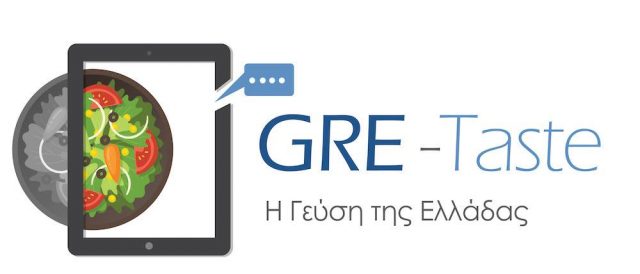The partners represent the pillars of GRE-Taste: the research institutes specialize in the full range of required technologies for recording and displaying cultural stock, the local companies specialize in food and cutting-edge technologies. Their coordinated cooperation ensures the achievement of the GRE-Taste objectives.
The body of the proposal and the object of research is the organization of multilingual (Greek, English, Russian) and multimedia (video, photos, text) content in a digital resource that will feed the envisaged systems and services. The multimedia material, which will mainly be collected by crawling from freely available material, will be subtitled where necessary, translated, and organized into GETTY AAT-compliant controlled vocabularies and a database that implements an expandable ontology compatible with CIOC-CRM and special ontology Europe Food and Drink. The thematic axes are: (1) Names of foods and ingredients: often dialectical and unknown outside the narrow area with local variations (eg the term “bougatsa” is understood differently in the North than in N. Greece) (2) and method of food production, certifications (3) Nutritional characteristics of food-health (4) Recipes, materials and cooking techniques (5) The cultural components of the above: origin of the names (eg Pontian), of the techniques and tools of cultivation and cooking , related expressions, customary use of food (eg folk medicine), historical and religious events related to food (6) Cultural activities related to food: museums (eg with agricultural tools), monuments and places (eg water mills), events (eg wine festivals), music, art works (multimedia material, events) (7) Physical activities related to food (eg routes, agritourism).
IEL has mature know-how as it has developed cutting-edge technology for the promotion of the culture of Thrace. Research is required for the development of the following technologies:
-Visual menu recognition and automatic translation. The traveler will photograph (alternatively type) food names and descriptions, automatically get the translation and search for multilingual information in the digital resource. For the translation service, a statistical approach will be adopted based on the experience of IEL in Mechanical Translation (METIS projects).
-Visual recognition of dishes. The traveler will photograph the food and get nutritional and cultural information about it. Deep machine learning systems will be used in conjunction with Clarifai services (https://goo.gl/tkDTdo, https://www.clarifai.com/demo), Google Cloud Vision API (https://cloud.google.com / vision /) and related research publications (Yu Deng, Shiyin Qin, Yunjie Wu. 2009. An automatic food recognition algorithm with both shape and texture information. Proc. SPIE 7489, PIAGENG 2009: Image Processing and Photonics for Agricultural Engineering).
-Multiparametric personalized searches. Technologies: semantic organization of information and techniques of machine learning and user modeling.
Mature technologies of the partners will be used for the completion of the GRE-Taste: search in multilingual material, route planning-tourism-culture, access to social media, communication with destinations and services. The connection between culture and food will take place at the level of international and domestic promotion: an exhibition will be developed with works by young artists related to food for the promotion of the gastronomy of Central Macedonia and Thrace and the support of the implementation and promotion its outside and inside. The presence of agri-food / catering companies on the internet and social media based on digital resource and visual material in synchronization with digital systems will be upgraded.
